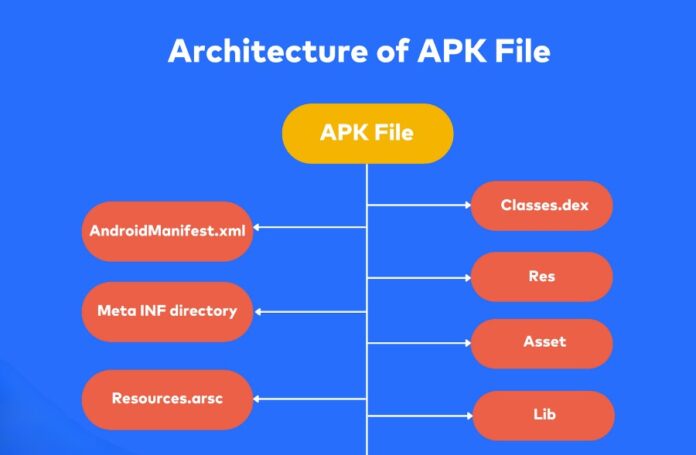If you’re an Android user, you might have come across the term APK file at some point. But what exactly is an APK file and how does it work?
In this blog post, we will explain the basics of the APK file format, how to create and install one, and why it is important for Android app development.
What is an APK file?

An APK file, short for Android Package, is the file format used by the Android operating system to distribute and install applications on Android devices.
It serves as a container that bundles together all the necessary components of an app, such as code, resources, assets, certificates, and manifest files.
An APK file can be built from source code written in Java or Kotlin. With APK files, you can easily download apps and install games online like the Taj Rummy Game.
Taj Rummy is an online platform that allows you to play Indian Rummy games and win real cash prizes.
You can download the game via Taj Rummy APK and choose from different variants of Rummy, such as Points Rummy, Deals Rummy, and Pool Rummy, and compete against players from all over India.
An APK file is analogous to other software packages, such as APPX in Microsoft Windows or DEB in Debian-based operating systems.
An application for Android must first be compiled using a tool like Android Studio or Visual Studio before all its components are bundled into a single container file to create an APK file.
An APK file has the extension .apk and can be opened with any ZIP file opening software. The .apk extension of such a file can be renamed to .zip and open the file in any ZIP application or extract its contents.
How is an APK file structured?

An APK file consists of several folders and files that store different types of information about the app. Here is a brief overview of the common contents of an APK file:
- META-INF/: This folder contains some important files that check the security and authenticity of the APK file. The MANIFEST.MF file lists the files and their signatures in the APK.
- lib/: This folder contains the native libraries that the app uses. These are files that are written in languages like C or C++.
- res/: This folder contains the resources of the app, such as images, texts, layouts, etc. The resources are organized into subfolders based on their type and configuration.
- assets/: This folder contains the raw assets of the app, such as fonts, sounds, videos, etc. These are files that are not changed or processed by the Android system and can be accessed by the app using the AssetManager class.
- AndroidManifest.xml: This file is the instructions for the app, which tells the Android system the app’s name, version, components, permissions, features, and other information. The instructions are essential for the Android system to recognize and run the app.
- Classes.dex: This file contains the app’s code, executed by the Android system on the device. This is the code that defines the logic and functionality of the app.
- resources.arsc: This file contains the resources of the app, such as texts, colors, sizes, etc. It is used by the Android system to load the right resources for the device’s configuration.
How is an APK file installed?
To install an APK file on an Android device, there are two main steps: verification and installation.
Verification
This step involves checking the security and authenticity of the APK file.
The Android system checks that the APK file is signed by a trusted entity, that the signatures match the files in the instructions, and that the certificates are valid.
This makes sure that the APK file has not been changed or modified by someone else.
Installation
This step involves copying the APK file to the device’s storage and registering the app with the Android system. The Android system opens the file and creates a folder for the app in the /data/app path.
It also creates a data folder for the app in the /data/data path, where the app can store its private files and settings.
The Android system then reads the instructions file and registers the app’s components, such as screens, services, receivers, and providers, with the system. The app is now ready to be opened by the user or other apps.
App Signing and Distribution

Signing an APK file with a digital signature ensures that the app comes from a verified source and has not been tampered with since its last update or release. This step is crucial for maintaining the security and integrity of applications.
App stores like Google Play require all APK files to be signed, serving as a gatekeeper to prevent malicious software distribution.
This process also facilitates the update mechanism, allowing apps to be securely updated on user devices.
Optimization Techniques
Reducing the APK file size and enhancing app performance are critical for a positive user experience.
Strategies such as code obfuscation deter reverse engineering, while resource optimization and compression methods decrease the app’s download and installation size.
Efficient optimization leads to faster download times, lower storage requirements, and reduced data consumption, significantly benefiting users with limited data plans or storage space. Ultimately, these techniques contribute to a smoother, more responsive app.
Compatibility and Fragmentation Challenges
The Android ecosystem is known for its vast diversity in devices, operating systems, and hardware configurations. This fragmentation poses significant compatibility challenges for developers, who must ensure their apps function across a wide range of devices and OS versions.
To address these issues, developers can employ various strategies, including extensive testing on multiple devices and leveraging compatibility libraries.
These approaches help in creating apps that offer consistent performance and usability across different Android environments, enhancing the overall user experience.
To Conclude

In the ever-evolving landscape of mobile technology, the APK file format remains a fundamental building block for Android applications. Its structure, encompassing code, resources, and metadata, encapsulates the essence of Android development.
Understanding the APK format, from compilation to installation, empowers developers to craft robust and efficient applications for the Android ecosystem.
As technology continues to advance, the APK format will undoubtedly evolve, but its significance in delivering the Android experience will endure.








